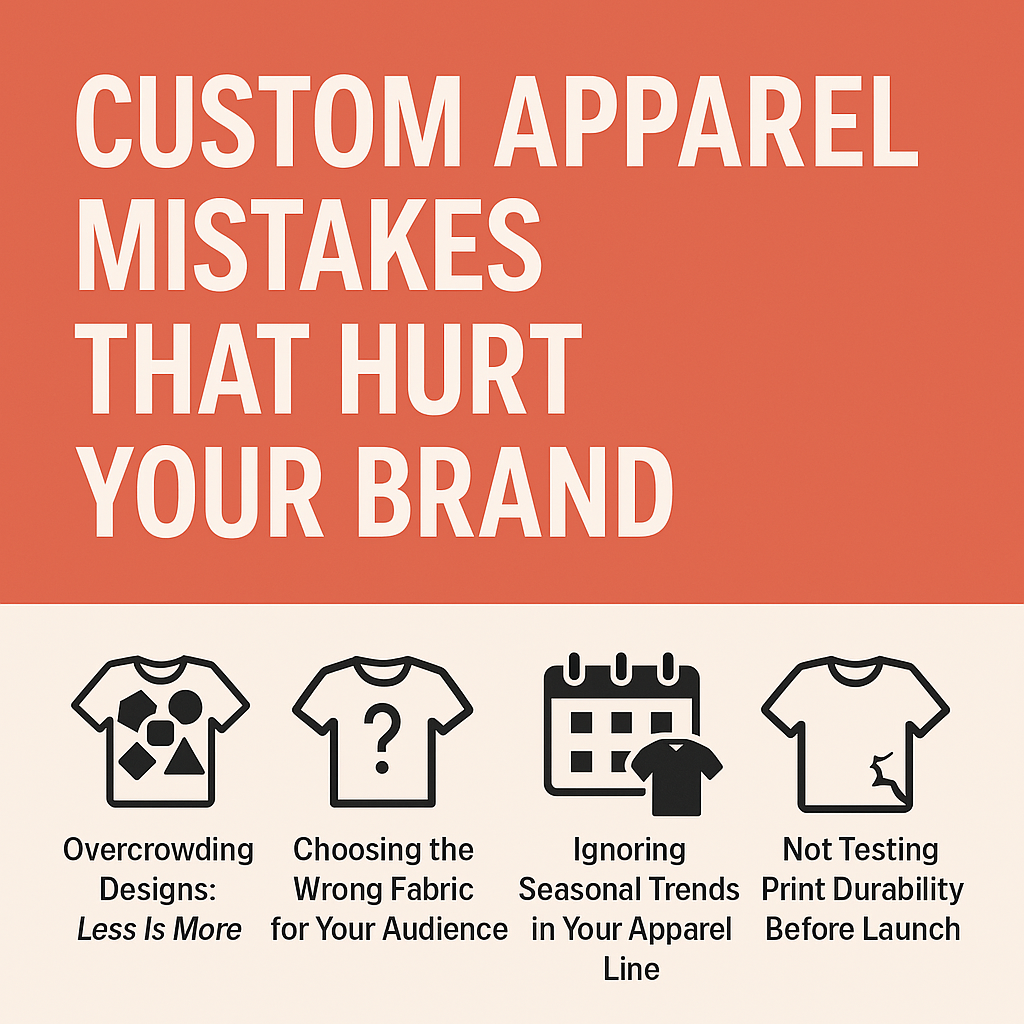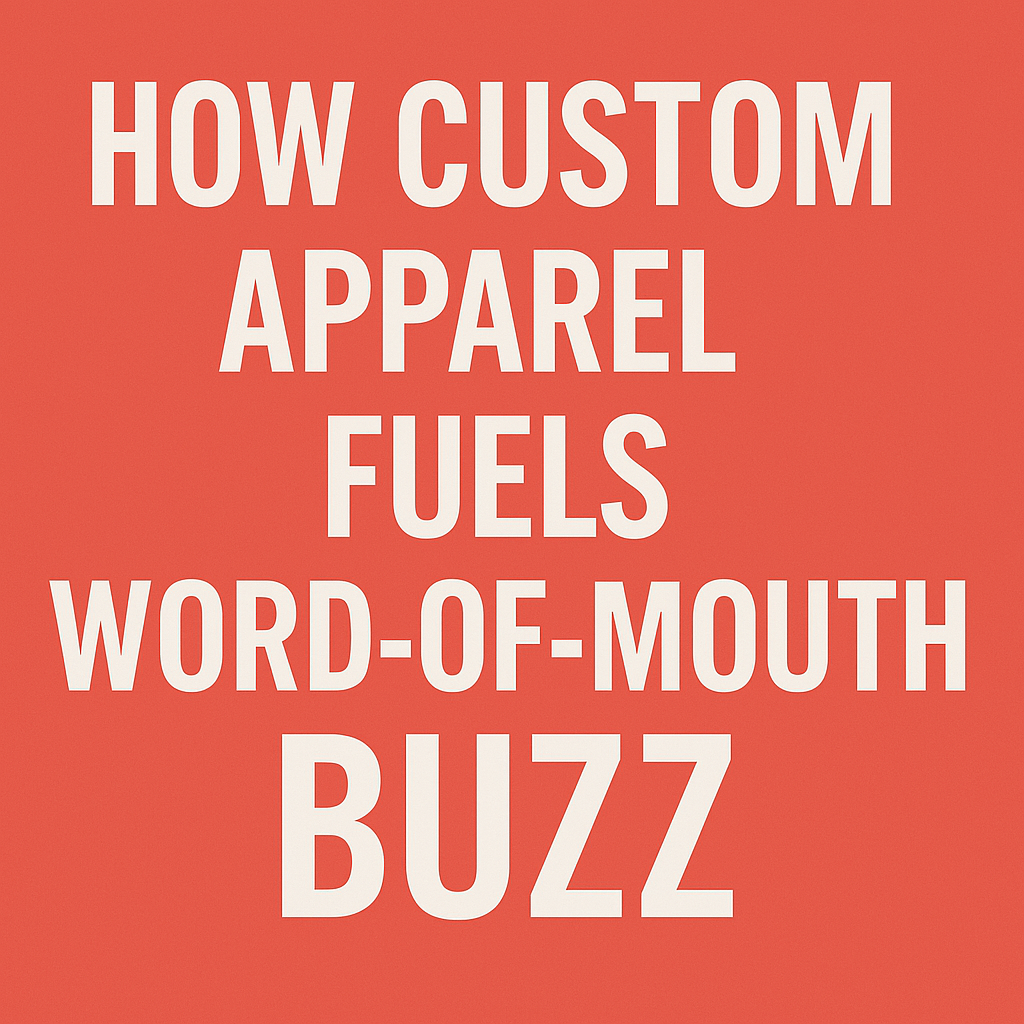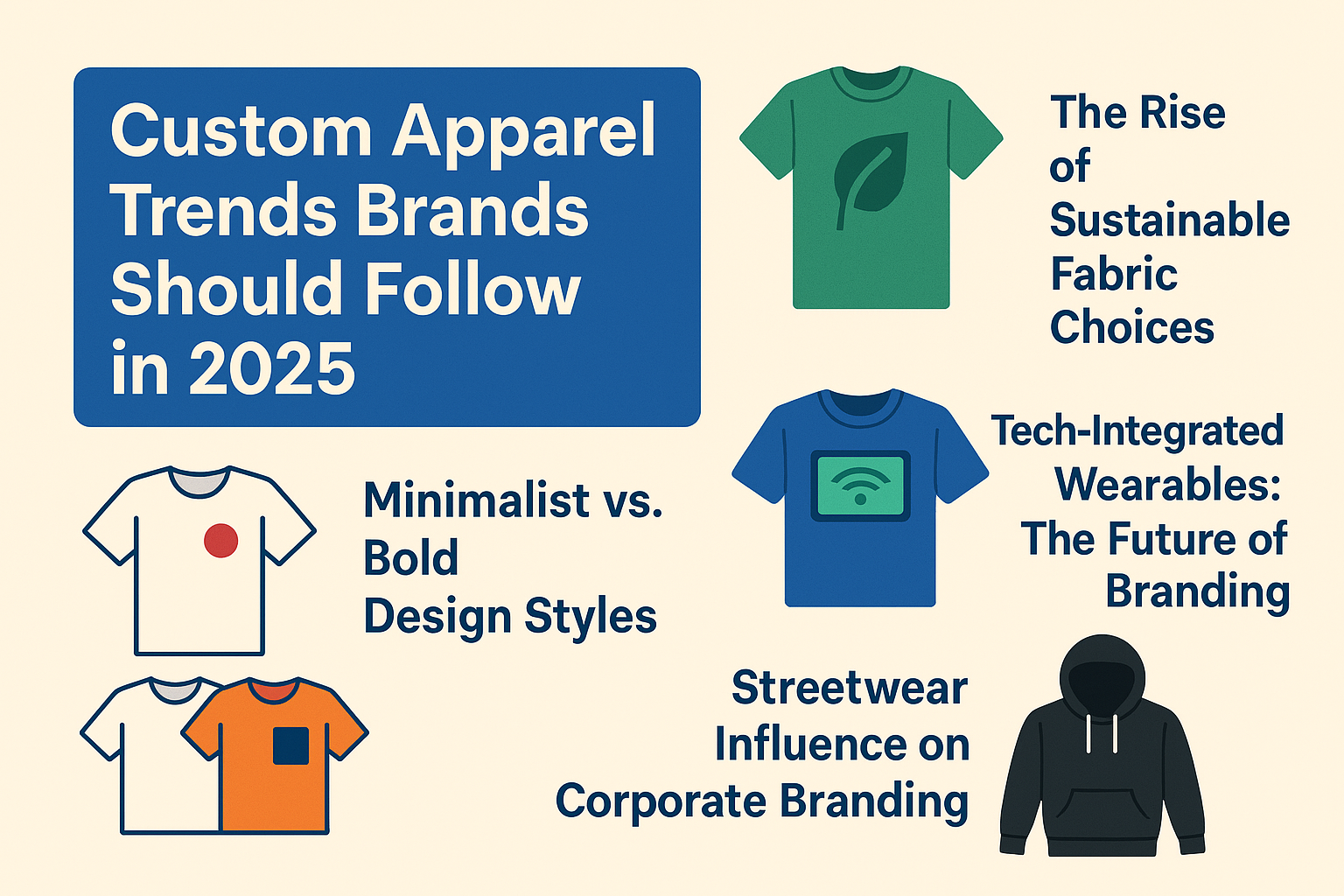Creating a custom apparel line is a powerful way to strengthen your brand, build recognition, and connect with your audience. But even the most well-intentioned designs can go wrong if common pitfalls are ignored. In this article, we explore the most critical custom apparel mistakes that can negatively impact your brand and offer actionable advice to avoid them.
1. Overcrowding Designs: Less Is More
One of the most frequent mistakes in custom apparel is overdesigning. It may be tempting to include as many elements as possible—logos, taglines, graphics, contact information—but this can lead to a cluttered and confusing look.
Why This Hurts Your Brand
An overcrowded design overwhelms the eye and dilutes the core message. In branding, clarity is key. A busy shirt often results in consumers ignoring the design altogether, missing the branding intent.
Actionable Tips:
- Focus on one central message or visual element. Keep it simple and memorable.
- Use whitespace strategically. Whitespace helps balance the design and draw attention to key areas.
- Get feedback. Show your design to a test group before launching.
- Think mobile-first. Many people will see your shirt in photos or on social media, so make sure your design is clear even on smaller screens.
Example:
A startup prints shirts with their logo, tagline, phone number, website, and a QR code—all on the front. The result? Nobody notices the brand because it’s too much to take in at once. Instead, placing just the logo and a clean tagline would have created a stronger impression.
2. Choosing the Wrong Fabric for Your Audience
Design is only part of the story. Fabric choice can make or break the user experience. Too often, brands focus solely on looks without considering comfort or suitability.
Why This Hurts Your Brand
If the shirt feels uncomfortable, wears out quickly, or doesn’t match the audience’s lifestyle, customers won’t wear it—no matter how good it looks. That’s a lost opportunity for brand exposure and repeated engagement.
Actionable Tips:
- Know your audience. Are you targeting athletes, professionals, or casual wearers?
- Choose fabric blends wisely. Cotton-poly blends offer durability and comfort, while tri-blends offer a more premium feel.
- Test for softness, stretch, and breathability. These features enhance wearability and increase chances of repeated use.
- Be inclusive. Offer a variety of fits and sizes to accommodate different body types.
- Pay attention to care instructions. Garments that are easy to care for are more likely to be worn often.
Example:
A fitness brand opts for 100% cotton shirts for their gym-going customers. While cotton prints well, it doesn’t handle sweat and movement as well as moisture-wicking polyester or blends. Switching to athletic-fit, performance fabric boosts both function and perception.
3. Ignoring Seasonal Trends in Your Apparel Line
Fashion is dynamic, and ignoring seasonal trends can leave your apparel looking outdated or out of sync with your audience’s needs.
Why This Hurts Your Brand
Selling hoodies in summer or tank tops in winter not only reduces sales but also signals that your brand is disconnected from real-time consumer preferences. Your customers want items that fit their lifestyle now, not six months ago.
Actionable Tips:
- Plan a seasonal launch calendar. Align product drops with weather changes and cultural moments.
- Offer variety. Include both core staples and seasonal items to maintain interest year-round.
- Research current trends. Use platforms like Pinterest, Instagram, and fashion blogs to stay ahead.
- Collaborate with influencers. They can offer insight into trending styles and help boost seasonal relevance.
- Use pre-orders to test interest. This helps you avoid overproduction and gather early feedback.
Statistics:
According to a 2023 Statista report, 71% of consumers are more likely to buy apparel that reflects current trends and seasons, showing a strong link between trend-awareness and purchase behavior. Additionally, brands that update their product line at least quarterly experience 40% higher customer retention.
Example:
A custom apparel brand launches a fall collection full of short-sleeve tees and misses an opportunity to include sweatshirts or light jackets. Not only do sales suffer, but the brand also loses a chance to be seen during the colder months. Including beanies, hoodies, and long-sleeve options could have aligned better with the seasonal demand.
4. Not Testing Print Durability Before Launch
It’s easy to fall in love with a design on screen—but how it holds up after multiple washes is what really matters. Failing to test print durability is one of the most damaging custom apparel mistakes.
Why This Hurts Your Brand
Peeling, cracking, or fading prints make your brand look cheap and unprofessional. Worse, poor quality reflects negatively on your overall brand image. Customers expect value, and when quality fails, loyalty declines.
Actionable Tips:
- Order test prints. Wash them multiple times before full production.
- Compare different print methods. Screen printing, DTG (direct-to-garment), and heat transfer all have different durability levels.
- Request guarantees or quality checks from your printer. Don’t leave quality to chance.
- Inspect during production. Make random checks to ensure consistency across batches.
- Ask for customer feedback post-purchase. It helps identify any overlooked quality issues
Example:
A nonprofit launches a campaign with custom tees, but after two washes, the logo starts peeling. This undermines trust and wastes budget. Running a test batch and selecting a higher-quality print method could have prevented this. By choosing screen printing or heat transfer vinyl with higher durability, the organization ensures longer wear and better exposure.
Final Thoughts
Custom apparel has the power to amplify your brand—but only when done right. By avoiding these common custom apparel mistakes, you ensure your clothing line enhances, rather than detracts from, your image. Focus on clarity in design, match fabric to your audience, stay in tune with seasonal needs, and always test for quality.
Additionally, don’t underestimate the value of branding beyond the product itself. Use custom hang tags, packaging, and even scent (yes, scent!) to create a holistic brand experience. Remember, every detail matters.
Whether you’re a startup looking to make a splash or an established brand expanding into apparel, following these best practices will keep your custom gear stylish, functional, and memorable. A smart approach not only avoids costly mistakes—it builds long-term trust and brand loyalty.




